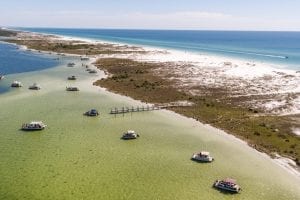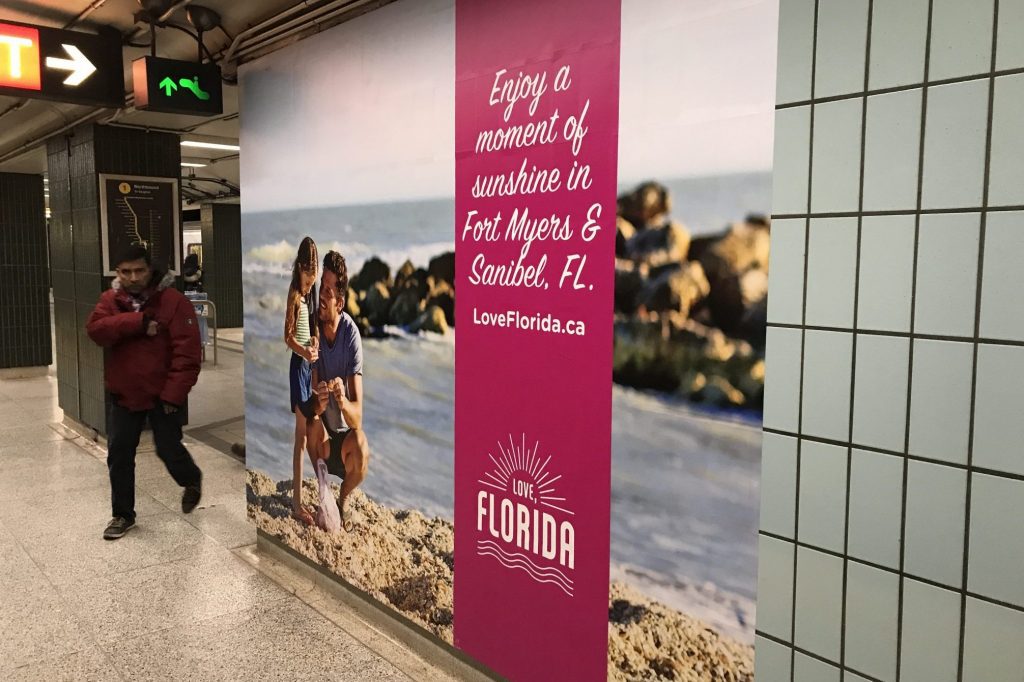Skift Take
Destination marketing money is again a political football in Florida, a state that 126 million people visited last year. As governments around the country examine their stance on publicly funded self-promotion, will the Sunshine State stay the course?
The Sunshine State’s official tourism marketing body is finding itself — once again — with clouds on the horizon.
Visit Florida is stuck in the middle of a budget battle between the state’s legislative bodies, a familiar position. But there’s a new twist this year: The organization’s very existence is at risk, with authorization scheduled to expire on Oct. 1 of this year.
“It makes our job a little harder,” said Dana Young, who became the organization’s president and CEO in January. “Because rather than just dealing with the budget, we actually need to affirmatively pass a piece of legislation.”
Executives and board members of Visit Florida say they are optimistic that there will be a solution before the state’s legislative session ends on May 3, and they and industry stakeholders have been pleading their case to lawmakers.
The number of visitors reached a record in 2018, increasing 6 percent to 126.1 million. Visit Florida says that out-of-state visitors spent almost $112 billion in 2016, and argues that every dollar invested in the organization yields a return of $2.15.
But as they wait for that message to get traction, those who work in travel and tourism — a major economic driver in the state — are watching and worrying.
“My members are just petrified that something could happen,” said Carol Dover, president and CEO of the Florida Restaurant and Lodging Association and the chair of public affairs for Visit Florida’s board.
For Virginia Haley, president of Visit Sarasota County and vice chair of the Visit Florida board, the uncertainty has been a distraction.
“I would call it very disruptive,” she said. Haley is finalizing the first draft of her organization’s fiscal 2020 business plan and budget, counting on Visit Florida to still be in operation, while communicating with the industry players and urging them to get in touch with elected officials.
“It takes a lot of time and effort,” she said. “In a year when we were dealing as a state with red tide and hurricanes, it’s an additional level of stress.”
Budget Fight Backstory
Visit Florida last found itself under serious threat in early 2017, when lawmakers came to an initial agreement to slash the budget to $25 million from the previous year’s $76 million. Ultimately — after several months and a special legislative session — they agreed to approve full funding, with several caveats tied to transparency and spending controls.
That followed outcries over celebrity contracts with personalities such as Miami rapper Pitbull and chef Emeril Lagasse. In the Pitbull case, the performer tweeted his contract in December 2016 after Visit Florida first declined to release it, citing trade secrets. That decision prompted a lawsuit from then-House Speaker Richard Corcoran.
The debacle forced the departure of Visit Florida’s CEO, chief financial officer, and chief marketing officer at the end of 2016. Its next CEO, Ken Lawson, was tasked with steering the organization in a more fiscally responsible direction — and fighting for funding — after he was named to the position in January 2017.
“There were a lot of self-inflicted wounds that Visit Florida had to deal with two years ago,” Haley said. “I think the difference is Visit Florida has been able to prove that it is a highly effective organization with the transparency rules, with the closer scrutiny. So in my conversations in Tallahassee, no one that I’ve heard has questioned the job that Visit Florida is doing. And that’s a big change from two years ago.”
This year, newly elected Gov. Ron DeSantis chose Lawson to head the state’s department of economic opportunity. He named Young, a former state legislator, to head Visit Florida in January.
The 2019 Fight
DeSantis asked for legislators to grant Visit Florida $76 million in his budget proposal, a request that was well-received among the travel industry. That’s the same level of funding the organization received for the current fiscal year.
“We have a new governor who is pro-tourism,” Mark Bonn, a professor and director of resort and vacation management at Florida State University’s Dedman School of Hospitality, said in an email. “I’m not worried a bit about what will happen with funding this year or for the next three years, for that matter. … I really see no reason to expect the legislature not to fund the budget at 100 percent request or even more than at the 100 percent requested level.”
But the Florida Senate has proposed $50 million for Visit Florida for the coming year, while the House of Representatives allocated $19 million in funding — enough to support it at current levels through the end of September, when authorization runs out. Both passed their own budgets last week, and now must negotiate to find common ground.
The bill that would strike the expiration date, a not-unusual condition for an organization like Visit Florida, has not moved forward. But Young said there are multiple ways to reauthorize the organization over the course of the next month.
“We’re not caught up in it being the actual bill that was filed,” she said.
Young said legislators have not told her they have a specific problem with the organization; rather she said, the process is merely political — and one she knows well from her time as an elected official.

Panama City Beach, which got marketing money from Visit Florida after Hurricane Michael, is shown in this promotional image. Visit Panama City Beach
“I believe that they will work it out because Visit Florida — the tourism industry — is so important to our state’s economy,” said Dan Rowe, president and CEO of Visit Panama City Beach. “If they don’t work it out, what the legislature is saying is that they are rolling the dice that everything will be OK.”
Several tourism insiders said, however, that some in authority have a philosophical objection to spending taxpayer money on tourism promotion — especially in a place like Florida.
“Some people have the belief that you have the resources, the beaches, the sunshine, and the theme parks … you don’t have to do anything to promote and market your product,” said Youcheng Wang, dean of the University of Central Florida’s Rosen College of Hospitality Management. “This is a typical concept of ‘If you build it, they will come.’ As a matter of fact, it has been proven case by case that is not going to happen.”
Case for Visit Florida
Experts pointed to the case of Colorado, which ceased funding its tourism board in 1993, as an example of a fate Florida wants to avoid. An oft-cited report by Longwoods International says the state initially lost $1.4 billion a year in tourism revenue, a figure that grew to $2 billion annually.
“I think it would be foolhardy to make rash decisions on tourism marketing funding that could leave us in a place that Colorado has shown is a pretty lonely place to be,” Young said. “But it would make Georgia and Texas and California and South Carolina and the Bahamas and Latin America all very, very happy. I’m surprised that California hasn’t sent thank you letters to the legislature saying, ‘Please cut their budget.”
Local destination marketing executives said Visit Florida has been a crucial partner in a difficult year.
Hurricane Michael hit the Florida Panhandle, where Panama City Beach is located, in October. While the storm slammed parts of the county, Panama City Beach itself bounced back quickly.
Visit Panama City Beach increased its marketing efforts to ramp up for spring, and got a $250,000 grant from Visit Florida to boost its program.
“That infusion of a little bit of extra dollars that we were able to deploy in the first quarter was critically important for us as we ramp into spring,” said Rowe, who is also executive director of the Bay County Tourist Development Council and secretary of the board for Visit Florida.
Similarly, Haley said grants from the organization helped Visit Sarasota County promote the area while recovering from red tide.
“We’ve seen some slight improvements coming back in our tourism numbers; that just would not have happened without the financial support,” she said.
Bonn, the Florida State University professor, said such unknowns remain a threat that is difficult to predict.
“Without adequate sources of funding, Florida would not be able to advertise to the general consumers that they are open for business,” he said. “Funding the level requested is more of an insurance policy against these kinds of disasters than anything else.”
Even without a crisis, Haley said Visit Florida makes it possible to reach an international audience through sales missions, trade shows, or cooperative advertising programs.
“I rely on them every week,” Haley said.
Young said in a recent interview that she planned to be at the Capitol every day as budget negotiations move forward, standing around in hallways and meeting with anyone who will listen.
“I am there to make sure that Visit Florida stays top of mind and that people fully understand our benefit to the state and conversely that they understand very clearly the economic detriment that they would cause if our budget was not properly funded,” she said.
And in the meantime, the organization is planning as if it will still exist in October.
“We have campaigns that need to be launched and we have things that need to be done,” Young said. “We are not going to miss a beat. We’re going to go full steam ahead until such time as that is not possible.”
The Daily Newsletter
Our daily coverage of the global travel industry. Written by editors and analysts from across Skift’s brands.
Have a confidential tip for Skift? Get in touch
Tags: destination marketing, tourism, visit florida
Photo credit: An ad promoting destinations in Florida is shown in Toronto's St. Andrew's Station in January. Visit Florida
